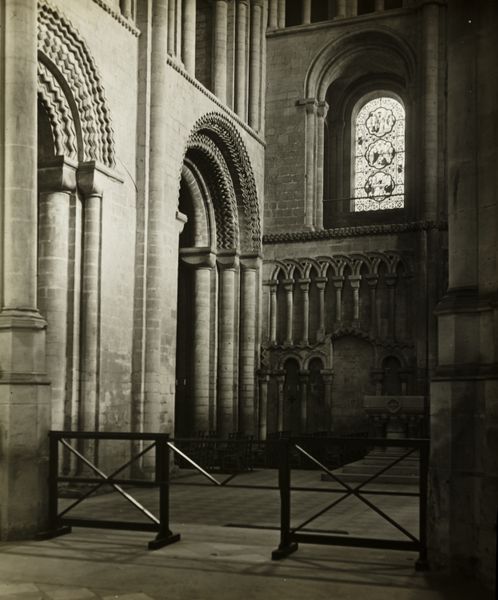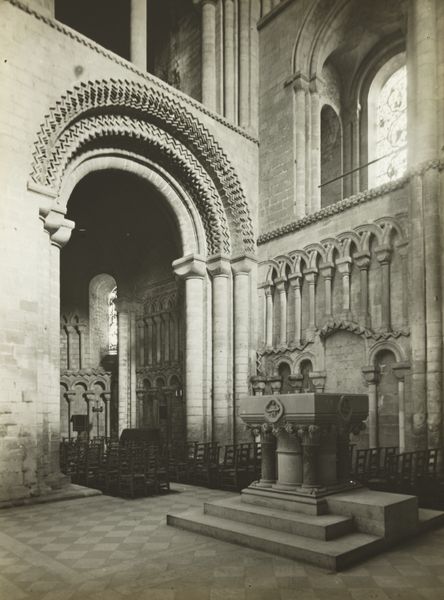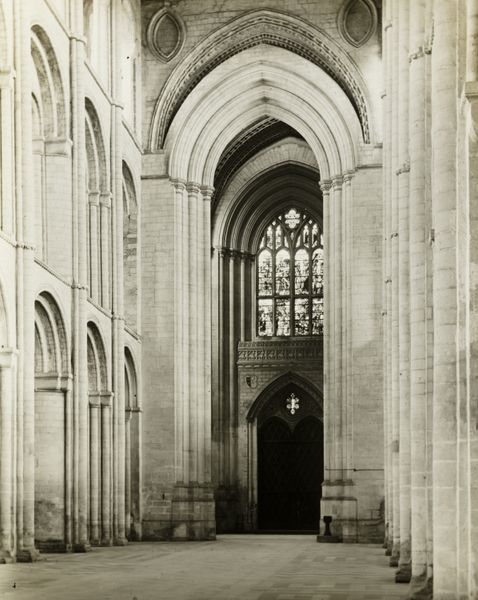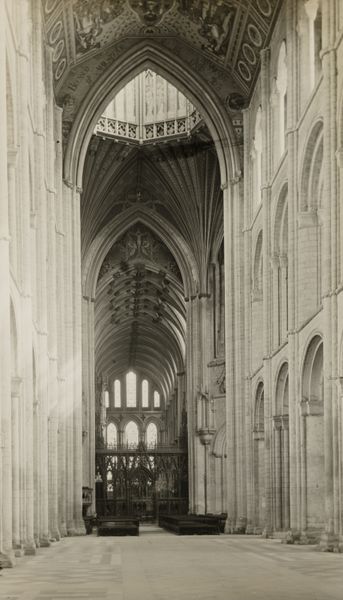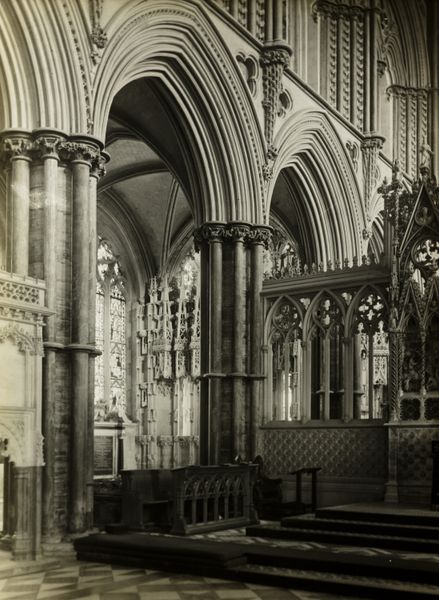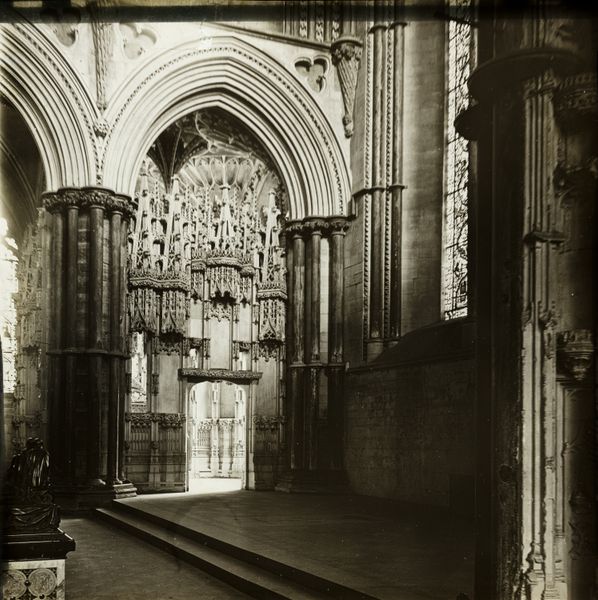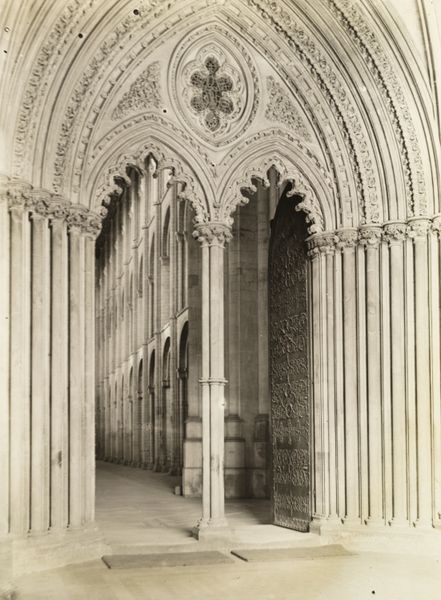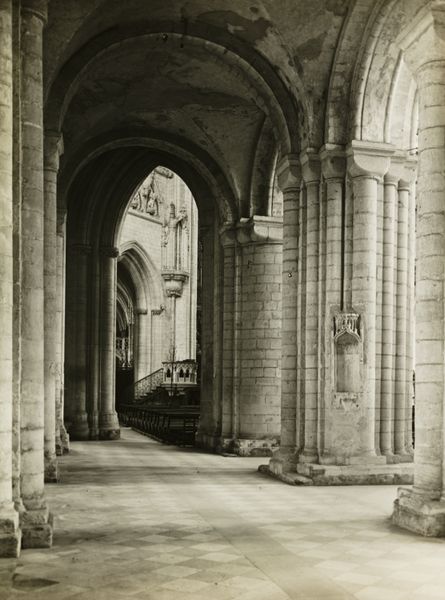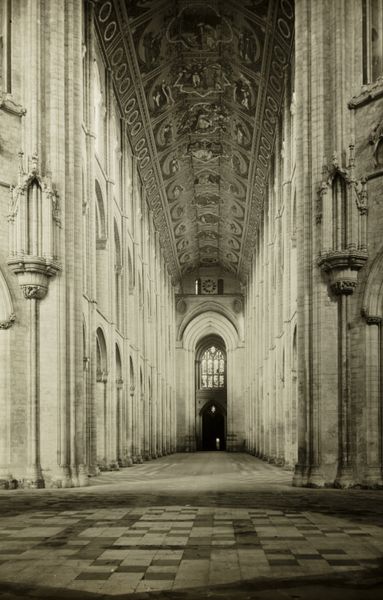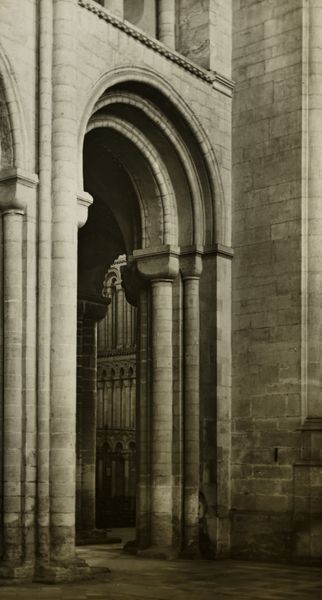
photography, architecture
#
16_19th-century
#
medieval
#
pictorialism
#
landscape
#
photography
#
england
#
19th century
#
architecture
Dimensions: 8.2 × 8.2 cm
Copyright: Public Domain
Curator: Editor: We're looking at Frederick H. Evans' photograph, "Ely Cathedral: West End of South Aisle," circa 1891. It's stunning – almost like stepping back into the medieval period. It definitely shows some amazing architectural qualities of the time period. How do you view this piece through a materialist lens? Curator: Consider the labor involved. Quarrying, transporting, and carving those stones? We see the end result here in the photograph, of course. But let’s imagine the material reality: What does the extraction of material, like stone, from the earth signify in this historical context? Also, consider what this photographic *print* signifies. Editor: So you're saying we should also think about photography as material and Evans as the worker? The wet collodion process, the silver prints themselves. Is the finished print the complete work, or is it just documentation of architectural work? Curator: Both! Evans controls light and perspective to shape our understanding. How does he utilize photographic *technique* to both document and elevate the space? It emphasizes both spiritual purpose *and* manual labor. Does his artistic control change the cathedral from simply a house of worship into something else entirely? Editor: I hadn't considered that. Evans doesn't just photograph it, he uses light and shadow to almost...romanticize the hard work. It's almost an intersection of the divine and the labor! Now that I think about the social status associated with labor, architecture and art, the artist might be shining the light on something that no one has recognized, making it hard for the viewers not to look away from these types of materials. Curator: Exactly. The material choices reflect social structures, then and even now! Editor: Thinking about this, art helps shed new light into topics that were often overlooked and disregarded in terms of recognizing social inequalities.
Comments
No comments
Be the first to comment and join the conversation on the ultimate creative platform.
